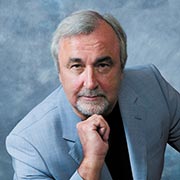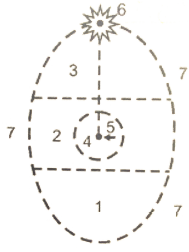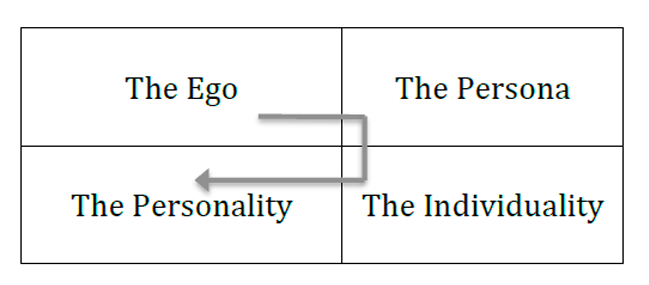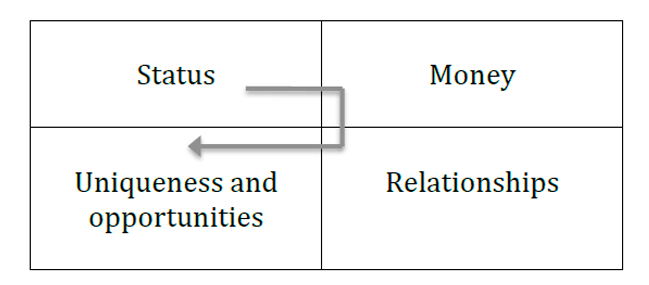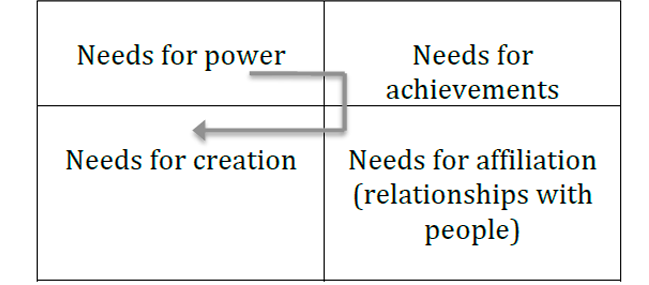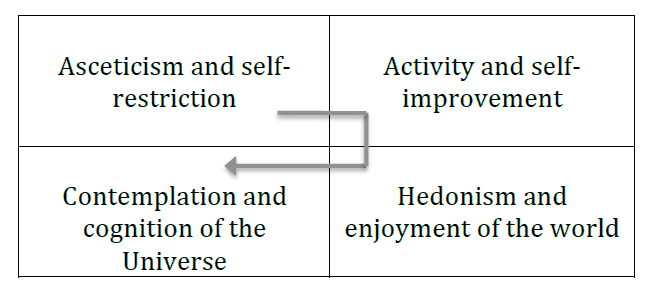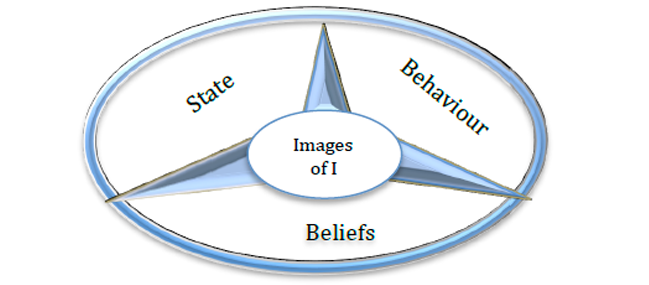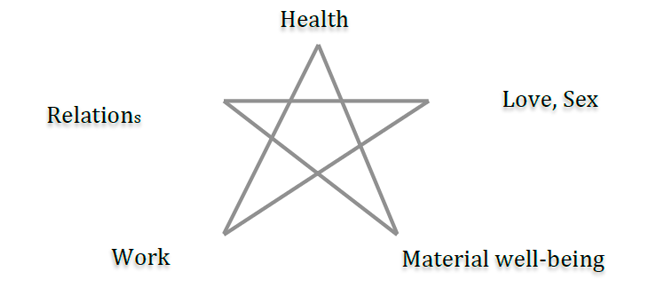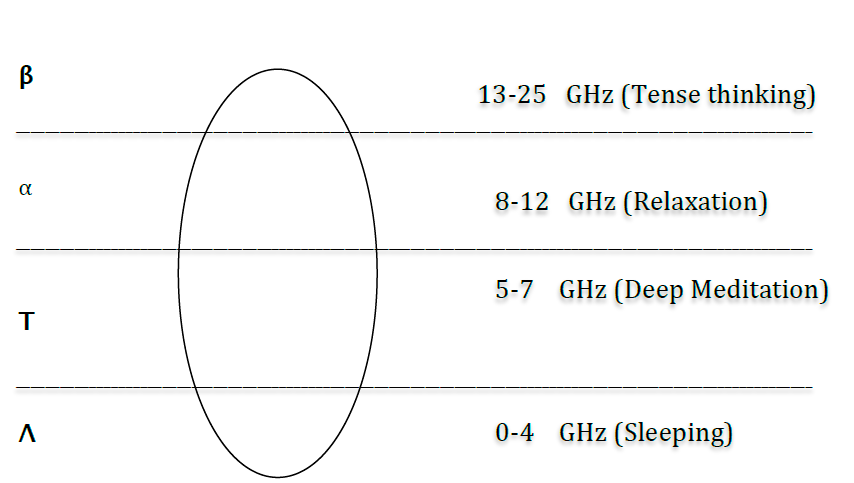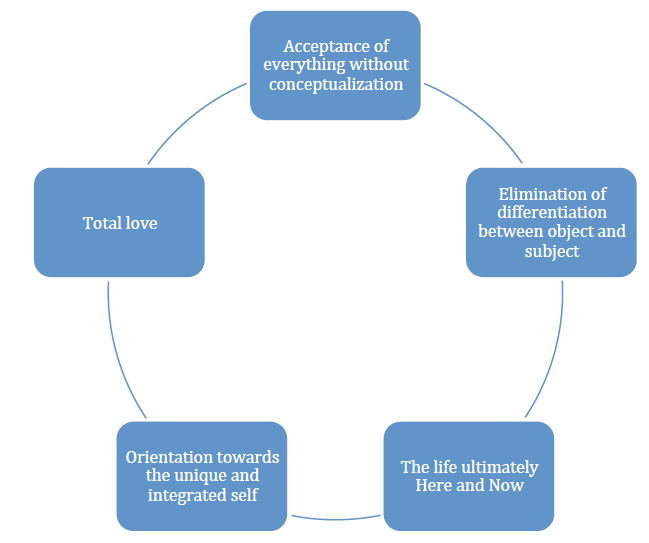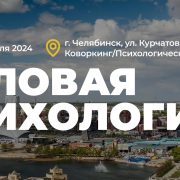Kind of introduction
… The story says that once upon a time a girl (not very clever one) caught the golden fish. The fish (perhaps with a usual sigh) offered the girl to fulfill any her three desires as payment for it’s freedom. “OK”, the girl answered, “then make my nose as long as a stork’s one… “ Having started with surprise the fish, however, fulfilled her desire. “Well-done”, the girl said touching her beak, not a nose anymore. “And now make me the ears of an elephant.” Having been surprised even more the fish fulfilled that desire. “Very well”, the girl said touching her burdocks into which her ears turned. “Finally, everyone will respect and fear me. But, for me personally make one more thing: thick and fat ass… And the fish being unable to realize anything implemented the last desire of the girl. Being released the fish swam back home. But on a halfway, having come to her senses, she decided to find out what really had happened? And she came back to the girl and asked: “Dear, why didn’t you ask for intellect, beauty or, for example, talent? “Oh, was it really possible?” asked a girl.
Have you finished laughing? Well, I will explain to you in brief: yes, it is possible to ask and to get whatever you need and without any golden fish and other silly techniques for wish fulfillment but with the help of absolutely different but really efficient ways (to be more precise – methods). One of these methods – maybe the most preferable and advanced – is called integral neuro-programming (INP).
What is it and why is it more preferable? Because for the time being the method is unique and able to embrace almost everything and everybody:
- All areas of work with a person
- All stages of human life
- All levels of psychotherapy of life activity
- All codes of modeling and governing the re
The aforesaid may be introduced in the following giant table to amaze and to take you all aback:
| All areas of work with a person | All stages of life | ||
| Work with psychosomatics | Psychotherapy proper | Pre-social (adaptation to life activity) | Social (socialization in the system of social relations) |
| Personality growth and development | Psychological counseling | Supra-social (trans-personalization of being) | Post-social (existentialization of life) |
| All codes of representation | All levels of psychotherapy | ||
| Neurologic | Psycho- semantic | Instrumental (problems with adaptation) | Intentional (goals (aims) of socialization) |
| Symbolic | Space (spatial) | Transcendental
(realities of transpersonalization) |
Existential-
semantic (areas of existentialization) |
Figure 1. Summary table of INP
Should it be in fact enormous and incomprehensible let us make it clear by considering consequently the way in which Integral Neuro-programming represents all its four hypostases to you:
- The areas of work with a person
- The stages of his life
- The levels of psychotherapy of life activity
- The codes to arrange
The areas of work with a person
At first sight, everything seems to be clear and trivial because, in general, there are only four areas of work with a person (being considered, certainly, from the position of the psychotherapy to wide extent: recovery of a soul and healing by a soul).
Psychosomatic healings. Psychotherapy proper.
Psychological counseling. Personal (personality!) growth and development.
Figure 2. The areas of work with a person
However, as soon as the original INP’s principle of four-dimensionality (i.e. everything may be represented in four hypostases and at the same time this “four” corresponds to low, middle, upper-middle and high level of development) is introduced, everything is getting much more complicated.
For example, in the area of psychosomatic healing we deal not only with the variants of “word treatment” which are different according to the level of interference in traditional medicine but, what is likely, with qualitatively different models of psychosomatics to be quite similar to what L. Dossey called “the eras of medicine” i.e. physiological, psychosomatic, quantum and theological (theosophical).
If we take this idea as a basis (and it rather stupid not to take it), as a result we will see that it corresponds completely to the above-mentioned idea of four levels of “whatsoever”.
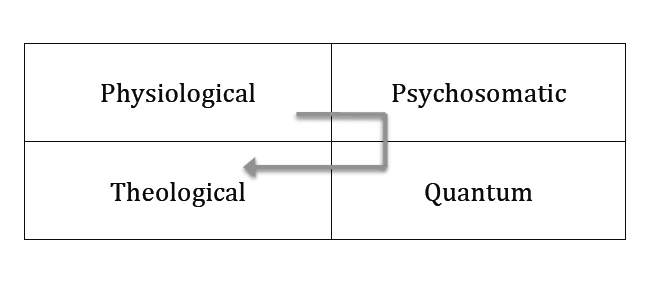 Figure 3. The eras of medicine according to L. Dossey
Figure 3. The eras of medicine according to L. Dossey
I would remind you in brief that physiological medicine implies traditional medicine with its therapy and surgery. Psychosomatic medicine implies all the ways to treat a body applying also (to some extent) soul (psyche). Speaking about quantum healing we mean all types of spiritual practices resulting in abrupt (sometimes unexplainable) recovery. Theological medicine embraces all kinds of practical realization of an interesting idea: under specific conditions the Creator will always come to help his creature…
In the context of IPN we will get the following: at the first level of work with psychosomatics we deal with only psychosomatic (more exactly – psychotherapeutic) support of traditional methods of treatment. At the second level (usually, the necessity of which arises when “common” healing methods don’t work…) we deal with true psychosomatic treatment where traditional medicine only supports the process not being the main one anymore. At the third level (when facing terminal diseases) – in the genuine sense – spiritual recovery; when owing to voluntary or involuntary discovery by a person the Ultimate Purports of his Being alongside with turning on (as its natural consequence) of the higher echelon of the Body and Mind regulation (connected directly with Soul and Spirit), happens what we are used to call a miracle alleged contradicting the laws of nature (but in fact, only what we know about the laws of nature…). And at the fourth level we deal with true and real emergence of the Almighty’s Will towards the creature asked Him for help (more exactly – the Inwardness of this creature), because it is early for him to die as he has not done yet what he has to do in this world…
If we take the psychic diagram of R. Assagioli we shall get the following: at the first level of our work we turn on only the lower unconscious oriented to maintain and reproduce life. At the second level – the middle unconscious, which “manages” social life. At the third level the higher unconscious, being a “dwelling place” of a Soul, joins this “tandem”. And at the forth one – the Higher or true Self of a person i.e. a fragment of the God’s hologram inherent to everyone (Remember in Hinduism: Atman equals Brahman…)…
- The Lower Unconscious
- The Middle Unconscious
- The Higher Unconscious or Super-conscious
- The Field of Consciousness
- The Conscious Self or I
- The Higher Self
- The Collective Unconscious
Figure 4.
But it is not that simple to deal with psychotherapy as it is because at the first level, in general, psychotherapy is a type of commonplace psycho- correction of symptoms of various deviations. At the second level it turns into psychotherapy close to a traditionally accepted sense of the word i.e. treatment of the reasons of these deviations (rather profound and long- standing…). At the third one, a certain quantum jump really takes place when we change sharply the vector of our work turning to “un- predetermination” i.e. we release a person from his basic meta-maps, mega-programs and super-scenarios (I use the epithets of superiority to emphasize that we work with the Keystone: the main reasons of a person’s non-freedom and predetermination of his life…). And at the fourth level we deal with development of his Higher Potential (as an `inwardness and a Cosmic Creature), what, by the way, is only possible if a person is “un- predetermined” (frankly speaking, it may happen not only by means of psychotherapy, but owing to the so-called existential situation: usually on the brink of death…).
The situation with psychological counseling in Integral Neuro- programming is, to some extent, easier. “To some extent” – because at any of its levels i.e. consulting of problems (the first) and life goals (the second) as well as the system counseling of tactics (the third) and strategy (the fourth) of live activity, we never give any advice to anyone whatever (“If I were you I would…), what, unfortunately, nowadays has become the core of psychological counseling being practiced by the God knows who… But in INP we “broaden” and /or “modify” certain “maps” with the help of which a person tries to solve his problem and reach his goal. The maps, which may be initially unreliable (e.g. try to find anything in Moscow with a map of St.- Petersburg!), outdated (e.g. would it be possible in Moscow-2013 to use the map of 1913?) and incomplete – without the region where the solution is (e.g. Nowadays, Moscow due to certain authorities’ decisions turned into something “monstrous”, at the same time, the most part of the so-called New Moscow is not shown properly in the maps)…
And the last in this part of the article –even weirder, but properly represented in Integral Neuro-programming: personal (but not only personality – you will understand why) growth and development. And it is not that simple from the very beginning. Answer me, please, who do we develop? You? What you? As according to INP in a person there are four the so-called First Selves, which are turned on alongside with your development (certain organizing centers, which can’t work together but only separately, and if the time comes..). The Ego is our false self-identity producing only the feeling of self-importance. The Persona is a set of roles and masks under which our Ego hides its rotten and foul essence in order to “interact and impact”. The Individuality is our true originality, which – if you are lucky – has grown on the Ego’s manure and struggles through the asphalt of the Persona towards the sun… And the Personality proper, who is our true Self not “predetermined” anymore by anything and really free to implement the Predestination (Purpose) as, for example, A. Solzhenitsyn did as well as some others equal to him and themselves…
Figure 5. The “First Self” of a person
Therefore, the failures in personal growth and development are connected with the fact that people who are involved usually have in mind only two opposite instances: the Ego, they have to get rid of by any way (rather to kill…) and the Soul, which should be obtained but nobody knows how. But everybody absolutely forgets about two other points i.e. we have come to this World not only to “make a step” from the Ego to the Soul but also to do something in here. We have to pass all the highlighted and created in this reality stages of personal development. Since even the quantum jump from the Ego to the Soul (sometimes it happens), to some extent, is a transition from the life Here to the life There. At the same time the earth life is not finished and the predesigned things are not implemented. In the light of the aforesaid, generally, the jump like this is a real desertion. Moreover, many of those passing from the Ego to the Soul are not looking for the Way but only the Refuge from the reverses of fortune. And in this connection hardly they could become and be the Enlightened (hopefully, you know what that means)…
Thus, in INP we start with developing the Ego, which we make either a strong one if it is weak or an adequate one if it is exaggerated. Then, what is curiously enough, we cherish the Persona with its roles and masks otherwise the life in social world would not take place, by the way, not only the successful one, but the life in general (and it is not a coincidence that those who have lost or those had no Persona leave this World: and not for monasteries but for forests, fields and communities…). Further, we make the unique Individuality of a person free from conditions carefully and consequently. And after that, we let his ideal Personality become apparent and now it is a step to the Inwardness and Enlightenment. Since our Inwardness having passed all the stages and “universities” of the earth life don not need any First Self but only the Higher Self being at the same time the True one…
The Stages of Human life
From time to time you maybe ask yourself why living in the same town, country and/or world we live absolutely differently as the dwellers of the same house but a rather big one.
Why those who live downstairs have to smell garbage while those who live in a penthouse enjoy views and fresh air… Ok, if we do not take into consideration usual “because they are thieves!” or, and what is more interesting if we see into this direction (why they managed and the others failed?) we will see, under otherwise equal conditions (having excluded injustice relating to any clannishness etc.) that those who have succeeded are notable for their highest vitality, or, to be more exact, they have survival potential (later you will understand why I use this word) what, in IPN, has its expression in the concept of vitality, i.e. some general capability to life activity as it is (with all dubious “amenities” accompanying the states and circumstances).
The formula we use to illustrate vitality is simple but wise (sorry). V = I/E
V – vitality proper of a certain system; I – information, it uses, E – energy the system spends on its maintenance.
Because it is clear to anyone, even a naïve one, that the vitality of a skilled driver on a road is higher that of a dummy one as the first one “drives” FIVE cars: his, two from the sides, one in the front and one from behind while the second driver drives only one car: his own and with difficulty. This example illustrates “I“(information) where the principle “the more you realize (not know but realize) the better for you in any situation” (by the way this awareness should be unconscious otherwise the effect of “centipede” works: if you remember, it, trying to answer to the question “What foot do you use to start walking?”, forgot how to walk at all…)
Now I would like to tell a few words about “E” or Energy. We will keep using the same “road” example, because even “any fool can see” that under otherwise equal conditions (we mean the capacity of a fuel tank) a more economic car driven by a skilled driver would be more vital than any other i.e. an uneconomic one driven by an economical driver because the first car would be able to drive further ahead (if speaking about the latest modern cars it turns out to be a kind of a computer game “Add some kilometers”). And moreover, the condition of a car would be much better.
Consequently, everyone has two strategies of improving vitality i.e. to improve quantity and quality of the information used and to diminish total energy input to keep oneself fit. The first strategy is, usually, chosen by people who go TO (i.e. going to the good) and the second strategy is chosen by those, who go FROM (i.e. going from the bad)… However, this strange one-sided choice of “vitality for” to work either with information or with energy (both TO and FROM) is determined not only by psychological reasons but by the level of your existentiality.
Now I will try to make it clear. In principal, long time ago the psychologists from different countries, nations and directions pointed out that a person has two variants to live their lives. They may be called for convenience as follows: socialization and self-actualization (implementing the first strategy you serve mainly the society, the second – mainly oneself). Furthermore, these variants were usually contrasted with each other as being incompatible! So, Jacques Lacan, one of the most famous psychoanalyst, laid it down as a dilemma “Purse or Life?” (trick or treat) and explained that if you chose a purse or the good granted by a society (which you are supposed to serve and to please) do not even hope for a free and happy life (a concentration camp is a concentration camp even if a name is different…). But if you choose the life free and happy forget about “a purse” – forever. Because when serving a purse alleged for the sake of life (even if you become an oligarch) nevertheless, you will stay a slave of your money, which you will keep earning furiously (why?) at the expense of your life, not very successful one in terms of true happiness and real self- actualization…
And it has happened that in INP I put it all not altogether but one by one i.e. I has assumed that symbolically the first part of a person’s life activity should be devoted to the “social service” in the mode of permanent surviving (according to general information up to 42 approximately…). Because its second part was designed by the Higher Forces exactly as self- actualization in the mode of “a life as such” – entrancing and sweet.
But they do not want to inform us about that. And, perhaps, because a person who has finished with “social illusions” and started seriously thinking about the purposes of one’s existence (i.e. he thinks seriously: “realizes existence”), unwittingly, starts to confront the society. No, he does not join the ranks of “rebels” (I am very skeptical about any kind of revolutionaries) but he moves away. And he becomes the so-called outsider (by definition standing apart, but not a poor non-achiever as it is widely thought) because he understands clearly that the proposed by the modern society pattern of success in the form of money, wealth, status, power and sensual pleasures is miserable (in the worth sense of the word).
And moreover, this model either finishes or self-destructs once the sufficient level of the above-mentioned has been reached (“a true happy person is a person who realizes that what he has this is exactly what he needs” – the approximate quotation of our great L. Tolstoy), or it turns into mania (addiction) which, unfortunately, nobody cures (we cure – but they do not want…). And the GOALS which used to be so desirable at the first stage of life (notorious health, relations, love, sex, work and wealth) appear to be only MEANS for the happy, joyful, and, most importantly, full of newly discovered purposes of existence…
Therefore, the “social” half of life is connected with increasing self-vitality by the way of improving one’s programs and/or “economic” of energy (notorious downshifting) whereas the “existential “ part is connected with quantum jumps in information awareness by means of up-grading the maps.
Why programs and maps? It is not clear, isn’t it? But the vitality may be “defined” differently.
V = (comprehensiveness of the reality maps) x (the level of the programs of realization)
And, as a result, my recent idea that wellbeing is derivative from, firstly, happiness and, secondly, efficiency, will be quite clear.
Wellbeing = (happiness) x (efficiency).
Consequently, during the first part of our life we as spellbound pilgrims (or “explorers”) devote to efficiency or to the programs providing the latter. We achieve the acceptable vitality avoiding extra-efforts. And we finish the part and don’t even try to live up to happiness, which is determined by something else i.e. a certain positive genuineness of our reality cards: ourselves, others, the World and the God. The connection is simple and unambiguous: continuing the analogy with a road, if you have a good car and confident driving skills (programs) but you count yourself unfortunate, the others to be “donkeys” and “monkeys with grenades”, the world (streets) – rather dangerous place, and the God (drivers’ patron)- a kind of moron, hardly you drive far away. Because the quality of your cards would not let you change them properly and use. Therefore, the problem is not in quantity but in quality. Although, the aspect of quantity of the first part of your life and the quality of the second one where the transition from quantity to quality must take place. But due to poor quality of the accumulated quantity it does not happen…
Why? Because it is not possible in this life to stay invariable even if you have acquired all the value and benefits of the world because in this case you have done only two steps towards bliss and you have not reached it because there are four steps. In essence they are the stages of a person’s life we must pass and complete in order not to come back to this plane of reality…
Now I have to start speaking very quickly as the concept of the stages of a person’s life (or levels of one’s development) is so global and comprehensive that I have devoted the book to the concept (“How to life to life”), but right now I see that the book may be (or should be) re-written as new ideas and materials are displayed in all spheres of human activities…
Thus, the basis of the concept of life stages (or levels of development) is the idea that these four stages supersede one another successively (if supersede…). Why? Because the so-called quaternary, a concept introduced by C. Jung, describes any process or phenomenon much better than triad (in general, it is the triad recognized by all modern sciences as a basis of hierarchy of any phenomenon being examined, and nobody assumes that it comes from the Holy Trinity), because it includes a certain fourth element which completes and unites the first three ones (on the principal that 3+1 equal to a whole and balanced structure), by the way, C. Jung thought that the fourth element in the trinity (triad) God the Farther, God the Son, God the Holy Spirit is Mother of God (I think it is quite logically). Therefore, I have supplemented the three stages of life, which are traditionally used in modern psychology (pre-social, social and post- social), with the so-called supra-social stage (thus, where the third stage was supra-social I supplement the hierarchy with the post-social one…).
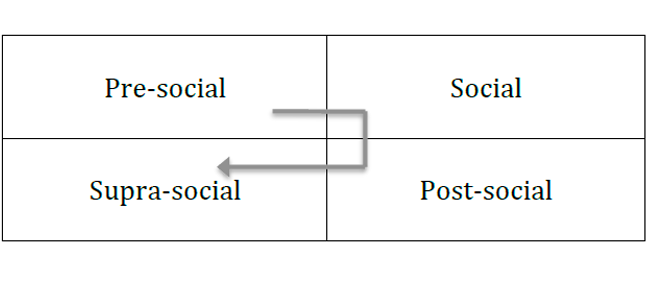 Figure 6. The stages of human life
Figure 6. The stages of human life
Each of these stages has one and the Main Task and these tasks are rather different at different stages. At the pre-social stage you are to adapt to life activity. At the social one – to socialize yourself up to the level you want (but not to any average one) having acquired the good things of life. Traditionally, it is widely thought that successful passing of these stages is practical realization of the slogan “The life is successful!” But it is nonsense because till now on – even being well socialized – you have only survived. Because only those people who are at the post-social stage/level start the life as such with all its beauty and brilliance, joy and happiness, inspiration and purposes (that’s why postman Pechkin stated that he only started to live after he had retired). Since only at this stage the process of existentialization takes place i.e. the life transforms from commonplace “drag” into the process persistently inspiring and satisfying you. And at the same time it transforms into the fact of the Universal scale because only here you can create as easily as breath.
I have written “the process persistently satisfying you” in the heat of the moment as it is not true. Sooner or later, at the happiest stage of the process of existentialization not satiety of life or fatigue but rather clear understanding that it is time to go ahead arises. Towards the fourth stage, which is devoted to our transpersonalization: painfully beautiful process of learning and mastering of what is waiting for us There, on the other Side of Being. In our next live, which certainly will be… (and, for the time being – it is enough…)
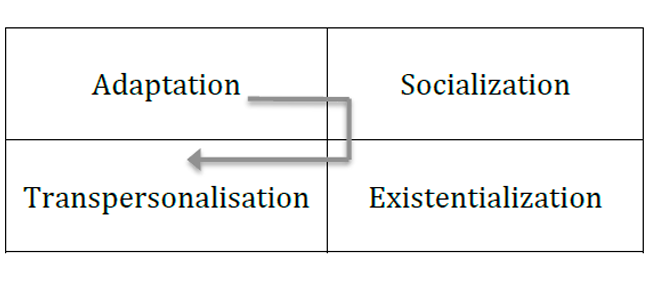 Figure 7. The tasks of each stage.
Figure 7. The tasks of each stage.
The next point is much easier. The stage of adaptation is, alas, to some extent a rotten land of self-affirmation. Socialization is an area of self- expression (or self-actualization). Existentialization is accompanied with spontaneous self-fulfillment. And the transpersonal stage – solely – grants opportunities of self-distributing: outing beyond oneself and one’s reality…
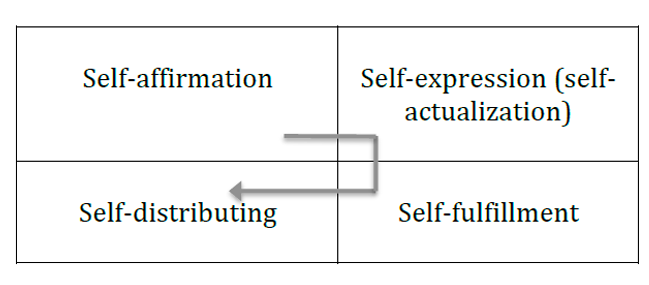 Figure 8. Leading tendencies of human life stages
Figure 8. Leading tendencies of human life stages
From the point of view of Jung’s typology (there are four of them: feeling, thinking, sensation and intuition types) during the first stage of life activity we should feel our life. During the second one we should comprehend it. During the third one we should emotionally accept it. During the fourth one we should comprehend intuitively so as to go ahead…
In this connection, in Hindu concept of the goals of human life the first stage in our interpretation may be associated with Kama (emotions/sexuality), the second one – with Artha (prosperity/work), the third stage is associated with Dharma (finding purpose of life). And the fourth one is associated with Moksha (acquiring cosmic consciousness).
 Figure 9. Hindu “tradition” in connection with the stages of life
Figure 9. Hindu “tradition” in connection with the stages of life
At different life stages absolutely different things play the role of the peculiar “regulators” of our behavior and activity. These are vain emotions and desires during the first stage; needs and motives during the second one; true values and beliefs at the third stage. And the true Purpose of life (and sub-purposes) become apparent at the fourth stage.
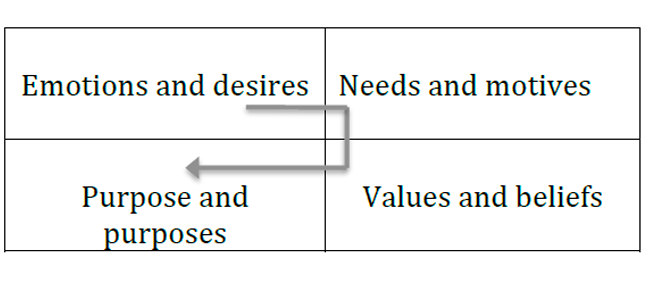 Figure 10. The “regulators” of the stages of human life.
Figure 10. The “regulators” of the stages of human life.
As a result, (or perhaps, it is just another pattern) at the pre-social stage externally we are motivated by status. At the social stage we are grounded on reasons of money and material wealth. At the post-social stage we are interested in human relationships. And at the supra-social stage we are captured by the uniqueness of everything and everybody as well as the omnipotence (almightiness) of the opportunities being opened.
Figure 11. External motivation of human life
The same may be presented in a more scientific way, namely, from the point of view of three motivational factors of D. McClelland being supplemented by the fourth one, which unites them.
Figure 12. Leading motivation of a person at different stages.
If we look at this from the point of view of the regulators of moral sense they will be tremendously and absolutely different for different stages. At the first stage only primitive egoistical “conscience” “works”, it controls your presence in a certain group (bandits, officials etc.) and we feel awkward being compared to the group because we are not exactly the same i.e. a car is worse, not enough money etc. At the second stage the so- called conventional morals “scratch my back and I will scratch yours” works. At the third stage the true morality implies that the other one is equal to you and your mutual responsibility for the equality. At the fourth one the genuine spirituality relies on our personal responsibility before the Creator and our gratitude to Him for everything (“thank you for being what I am…”).
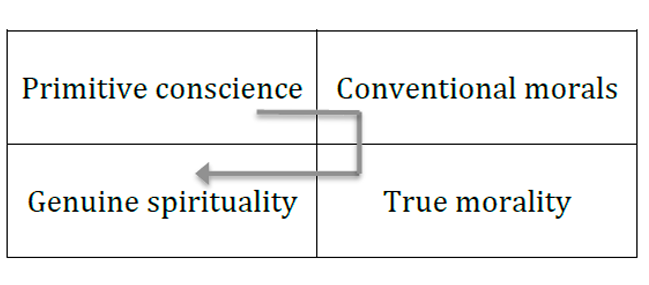 Figure 13. Moral regulation of behavior at the different stages of human life
Figure 13. Moral regulation of behavior at the different stages of human life
And again it is not for nothing. Since only at the first two stages of your life the main operating “instances” (by the way, they work unconsciously) are the Body and the Intellect, in general, they “turn on” in almost everybody. At the third and fourth stages the Soul and the Spirit inherent to everyone should (but sometimes they do not) wake up in everybody. And without discovering and cognizing the Soul and the Spirit we will never complete THIS life cycle. But the Soul literally demands morality and the Spirit needs spirituality…
I think I would rather stop here otherwise I will put out another hundred of the similar above-mentioned charts describing human life in its different roles and images. So after all I will limit myself to something quite true-to- life (i.e. relating to your life) rather than esoteric…
From the life-style point of view the first stage of life activity is passing in ascetic self-restriction (dissipation of everything can not be recognized ecological), which at the second stage will be replaced by conscious activity and a certain necessary “self-improvement”. At the third stage everything will be changed as if by magic: you will suddenly enter in the state of pleasant hedonism with either active or not enjoyment of the world. At the fourth one, having been tired of vanity you are engaged in contemplating and cognizing the Universe, a particular case of the latter is the Earth.
Figure 14. Life styles at different stages
By the way, the stage of life, which you have reached (or where you are stuck) by the moment, becomes apparent through your attitude to money… as being at the first stage you react to financial crisis by minimizing expenses, at the second one – by maximizing income. At the third stage you maximize again but efficiency (it is well-known from the Pareto’s rule: 20 percent of business gives 80 percent of revenues and, obviously, you would focus on these 20 percent). At the fourth stage your strategy is minimization of efforts because the money, you really need, would literally “come” itself in the amounts you would not know what to do with and on what to spend…
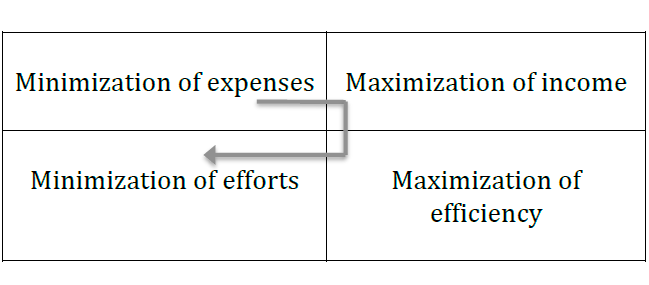 Figure 15. The strategies of material wealth at different stages of human life
Figure 15. The strategies of material wealth at different stages of human life
The Levels of Psychotherapy
In the previous chapter I have described the stages of human life – the notorious cycle of homo-genesis – simultaneously: all four quadrant from the ”comparative-accumulative point of view”. But it does not work with the levels of psychotherapy because each of them represents the very interesting and very complicated system of patterns, models, psycho- techniques and methods of psychotherapy to be absolutely different from the others.
I will clarify my idea otherwise you do not understand “the presentation” of this very important component (to be more precise – a separate dimension) of integral neuro-programming. The instrumental psychotherapy is carried out with the help of rather simple techniques (but being precisely and toughly algorithmized) and their line sequences (the so-called modules). For example, the famous General or Basic module relates to the latter, it helps to pull out the client from his problems within approximately 20 hours and direct him to the meaningful aims in about 7- 10 (Practitioner) and 12-15 (Master) directions! In geometrical aspect the techniques corresponds to a line.
However, the psychotherapy of the intentional level is fulfilled by means of psycho-technologies: two-dimensional combination of these techniques. As a result the work is a bit more complicated at this level but twice as much more efficient. For example, in the module “Efficiency of activity” the seven psycho-techniques are used and each of them is at least two-dimensional, that is why it is so difficult to describe them, because within the square (in the geometrical aspect the techniques corresponds to a square) it is possible to build a big (frankly speaking, endless) number of these lines. It means that psycho- technologies are algorithmized and multi-variant in fulfillment.
Psychotherapy of the semantic-existential level (earlier we called it semantic) is fulfilled by means of tree-dimensional models which geometrically may be presented in the form of a cube where the number of variants is getting threatening (or inspiring?) big. For example, in one of the first similar models (very formalized i.e. very simple) “Gym in jungles” by R. Dilts ( I have changed it by means of introducing nine instead of five the so-called neuro-linguistic levels (NLL) – later on you will see what this means) three positions of perception (I, he, watcher), three time positions (past, present and future) and nine NLL (environment, behavior, capabilities, intensions, values, beliefs, identity, mission and purport). As a result we will get (I would remind you – the model is very simple!) 81 variants of its application 3 x 3 x 9 = 81.
As for the transcendental level of psychotherapy one should immediately stand up and salute to the great four-dimensional patterns (a pattern means drawing or tracery). These patters are very difficult to describe and to present as well as to imagine because in the geometrical aspect they are tesseral that is a four-dimensional hyper-cube with twenty-four quadratic sides.
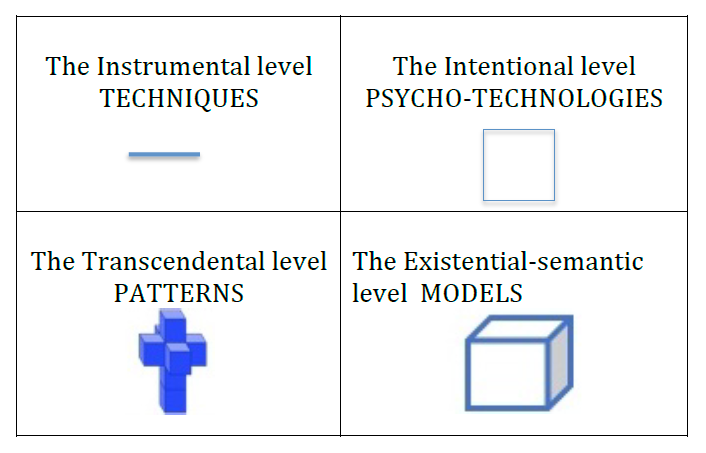 Figure 16. Content and geometric interpretation of the levels of psychotherapy
Figure 16. Content and geometric interpretation of the levels of psychotherapy
Moreover, I would like to add to the above-said that by means of the techniques we work at problems; the psycho-technologies are used to “achieve the goal for”; the models are applied to define and fulfill the directions of existence; the patterns discovers new spaces of being…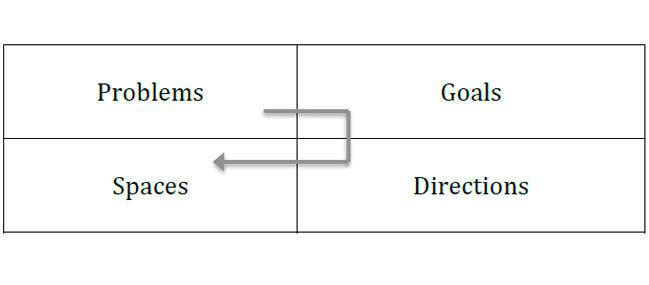 Figure 17. Objects of different levels of psychotherapy
Figure 17. Objects of different levels of psychotherapy
What else could I tell you about in this chapter? It is about the basic conceptual models (schemes) to be used at each of these levels of psychotherapy. They are more than simple but overall (level plus level) they present the surprisingly interesting multi-variant structures hereinafter named the methods of integral neuro-programming.
Thus, the instrumental level of psychotherapy is presented in INP by the model to be proudly called “Mercedes- SK” (because it resembles the symbol of the famous automobile brand).
ENVIRONMENT
Figure 18. Model “Mercedes – SK”
As it obviously appears from the model all the problems the clients apply with relate to one of these five categories. They are: the environment (“I am fed up!”); the state (“I am out of sorts!”); the behavior (“I don’t want” or “I fail”); the beliefs (“I don’t believe”, but sometimes “I don’t understand”) and the Self- images (Images of I) “Something wrong with me!”. Thus all these variants of problems are provided with a great number of algorithmized techniques and “awarded” with the General or Basic module of INP. Frankly speaking, this Basic module is the two-dimensional psycho-technology serving a certain bridge from the instrumental to the intentional psychotherapy…
The intentional level of psychotherapy is introduced by another model: “The Star of Well-being” (which, if you want you may put it on “Mercedes-SK” and get a two-dimensional model).
Figure 19. The Star of Well-being
This model represents and shows the goals of socialization. Because if you are considered to be fit in this society not when you possess an apartment, a dasha, a car and other material stuffs (that, actually, possesses you) but when you are healthy, have relationships, love, sex, work and wealth (certainly, you are satisfied with – but, remember that the poor is not the one who has a little but the one who needs more…). Otherwise you either do not acquire the above-mentioned stuffs or you are not able to manage and enjoy them…
The existential-semantic level is represented with much more complicated model referred as “the Sign of Quality” (it used to be in the USSR and it marked the goods of high quality…).
 Figure 20. The model “The Sign of Quality”
Figure 20. The model “The Sign of Quality”
I am sorry, but I have to speak quickly as it is difficult to describe these models of existence in brief because the cycle of being is the model, which describes both the life of a person and its separate stages and comprises the following categories (from the bottom to the top/ upwards).
- To Possess
- To Do
- To Know
- To Relate
- To Be
- The Russian doll SK let us look at any “component” or at an existential direction from the point of view of the other elements of the analysis (from the top to the bottom /downward).
- The Meta-goal (what for?)
- The Target relations (where from – where?)
- The Rapport (who with?)
- The Information (on the basis of which data?)
- The Actions (in what way?)
- The Preferences/skills (what I like to do, and what I can do?)
- The Neuro-logical levels give an opportunity to analyze and change our being in nine levels of being (upwards):
- The Environment (Where, when, who with?)
- The Actions (What?)
- The Abilities (How?)
- The Intensions (What for?)
- The Values (What for?)
- The Beliefs (Why?)
- The Mission (For what sake?)
- The Purpose (in what world?).
The Model TOTEM let us analyze not only the future but also the incomplete past stages of our life from the position of the following more or less clearly formulated questions.
- T (trigger) – What point should you start from (or from what point it started, and should have started with)?
- O (operation) – What should you do (what you did) and what you should have done?
- T (test) – What should you learn (you have learned – and what you should have learned)?
- E (exit) – What should you understand (what you have understood and what I should have understood)?
- M (motivation) – How should you live further (how you lived – and you should have lived…)?
And finally, the model “Result” implies specification of the above-said in the form of the clear structure of directions of life activity in two variants of fulfillment: simple and complicated. And I will give you only one – the simple (in the complicated one we use twenty five questions, and in the simple – only seven…).
- The What do I want?
- The How shall I know that I shall achieve it or shall receive it?
- The Condition Where, when, how and who with do I need and want it?
- The Resources/mean What do I need to achieve it?
- The O Why did not I achieve it earlier?
- The M
- The If it is really worth my efforts. And if “yes”, why?
As you can see, even at the existential-semantic level we face such a ”cube” that after hardly anyone wants to deal with the “tesseral” transcendental neuro-programming level… and it is no need, as the model of the “fourth dimension” of integral neuro-programming in its separate elements is simple as well, but its content is extremely complicated. And it is referred to as the Circle of Enlightenment. It is a circle because the combination of frequencies of the activities of human brain takes exactly this form in the so-called “Mirror of intellect”.
Figure 21. The picture “The mirror of intellect” for the enlightened
And the Enlightenment, because it is Ultimate Comprehension of Non-dual World (i.e. united, finally, in the whole in all its contradictions as Mattter and Conscious and the others), is indeed, the Main and Absolute Purpose of the whole human life. As only having acquired the Enlightenment you will get back your true self and come back Home in the Quantum World of Nirvana Immortality.
The model “The Circle of Enlightenment” is as follows (I have used the concept of five reasons of non-enlightenment by Ken Wilber)
Figure 22. The Circle of Enlightenment
You know, I have chosen the nominations (names) different from the original (by Ken Wilber) because it is very-very-very difficult to explain what they imply (for me it has become trivial) because they are only general names for the integral (entire) systems of patterns.
For example, the acceptance without conceptualization let us stop thinking over the actuals of the world without dividing them in right/wrong, good/bad etc.
Elimination of differentiation between the subject (you, for example) and the object (me for you, for example) grants an opportunity of true reunification of everything and everyone in a certain fantastic and cosmic intimacy.
The life Here and Now gives us absolute enjoyment of being and total comprehension of the fact that Nirvana and Samsara are all the same and we have already been Enlightened but we do not know yet.
Orientation towards the unique and integrated “Self” (the God) eliminates the division into small “selves” and unites ourselves inside and outside with understanding that through billions eyes only one “Self” looks at the world: His – of the Lord in the Highest and the Absolute.
And the Total Love is the absolute acceptance of the fact that everything in this and other Universes is built at this all-absorbing feeling, that in fact, the God is Love…
NB: let us go back to the Earth. If what was described in the existential- semantic and, moreover, the transcendental level of psychotherapy in Integral Neuro-programming surprised and frightened you, get calm and relax. Because it is not about you yet and not for you – but only “yet”, as about 85% of our clients are the people who do not need all this “existential” and “transcendental” stuffs but they need to solve the problems of adaptation (the instrumental level of psychotherapy) and to achieve socialization (the intentional level). Because only after passing these levels you may aspire to “a quantum jump”: at first to the existential level and afterwards to the transpersonal one. That is why great Ken Wilber stated insidiously that the way to Enlightenment goes through the psychotherapist’s cabinet …
The Codes of Neuro-programming
In this part everything in Integral Neuro-programming is very clear and, at the same time, very efficient, because it is based on the amazingly reasonable idea i.e. if you want to come to an agreement you should speak not your language but the language of an opponent. And it efficient, because if an opponent speaks several languages when communicating use simultaneously all the languages he knows and it will let you explain what you want and achieve “full mutual understanding”…
I will clarify the first moment. As it is well-known that the main director of our live is not the Consciousness being in the foreground and pretending to this role but the Unconscious which standing modestly behind the scene (during a performance) or sitting at the mixing desk. After the experiments of “our” I. Smirnov and “their” B. Libet who proved brilliantly that it is the unconscious that makes all the vital decision 0,5 seconds before the consciousness “turns on” (then the consciousness gives long and, in general, false grounds and explanations), even psychologists have understood something. For example, the fact, that the consciousness is “co- knowledge” (mutual knowledge) i.e. it is something which assists in negotiating with others, explaining them the reasons of their actions (and wrong actions). Moreover, the true reasons of all the actions are deeply in the unconscious… And now I would like to add that words, figures, schemes and sign and verbal environment of human consciousness is not the language of the unconscious! And therefore, it does not work when interacting with the unconscious.
The analysis I have conducted shows that the so-called professional experts in a soul and a person have used only four main “languages” of the unconscious which we refer to as the codes.
- Neurological
- Psycho-semantic
- Spacious
- Symb
Let us focus on the each one.
The first one of the above-mentioned – neurological – was discussed long time ago, not sure that in the works of Aristotle, but for sure, in the works of G. Spenser. However, the term started to be broadly used only in the sixtieth of the last century. When it was declared in NLP (neuro-linguistic programming) that the content of any human experience could be resulted in the four modalities (visual, auditory, kinesthetic and discrete/digital) based on sub- modalities (for example, dimly-brightly, low-loudly, solidly-softly etc.). It means that everything happened or happening to you, you can see (V: VE- external and VI- internal), hear (AE and AI), sense (feel) (KE and KI) and processed comprehending and making schemes and structures (DE and DI). Namely, changing this VAKD, i.e. the structure of human experience, you may easily change the content of this experience. For example, if the big and dark “picture” of your fail “experience” is replaced by a small and light (and cheerful as well) picture (i.e. the structure of coding is changed) the content of the experience may be changed positively. And out of failure it may be turned into a lesson and feedback …
It is worth mentioning that practical psychologists and psychotherapists treated the idea and the other absolutely true statements of NLP rather skeptically. Frankly speaking, they confronted NLP and there were at least three reasons.
The first one is the “shallowness” and unscrupulousness of the NLP community (in particular, some of the domestic representatives). That is why in the international conference on psychotherapy of 2013 Peter Schultz, the President of the European Association of NLPt (the same NLP, but with psychotherapy) declared that only 3 % (three percent!) of representatives of the world neuro-programming really knows, can and does something, only 7% knows but does nothing and the rest 90% is charlatans and members of sects.
The second reason is the poor and weak methodology of neuro-linguistic programming, which un to now is just the bulk of really working ideas, models and methods. And everyone who wants may take whatever he likes without any references to where and what for he has taken this or that… And the third reason: when NLP appears the psychologists and psychotherapists were used to work in the other code, the one I referred to as psycho-semantic, and it is not at random. Because the content of experience is not the core whereas the significance you give to this experience is the essence. Since the experience it is not what has happened to you but what you have done with it i.e. the way you have comprehended and estimated the experience, stated O. Huxley.
The essence of “psycho-semantic” work may be explained in a simplified way as follows. Neither phenomenon in your live, which seems obviously bad, is not bad, to be more precise, is not absolutely bad. Since the every bad always has a good aspect, which we usually do not notice. For example, a dismissal is not only loss of a job, but it is as well an opportunity, finally, to find a trade you serve (the one you were born for); a divorce is not only collapse of a family life but sexual freedom, as well as a way from the deadlock of a family life which was not happy and “an entrance” to the process of looking for a new partner; a disease is not only a threat to health but an incentive (and permit) to reexamine one’s life having improved it with more relax, rest and pleasure. In general, etc., etc…
Thus, starting with “grand-dad Freud” the professional “experts in a soul and a person” learned to create conditions for such re-comprehension through endless monologues at a sofa, dreams when one is awake, non-directive dialogues etc. However, their sophisticated methods are not of great importance, the essential is re-examination of a problem, which may happen in the form of emotional insight when the problem stops to be a problem or perhaps though the intellectual insight (“it is not pathological cowardice but reasonable caution…” – I am kidding, of course). And sometimes it does not happen at all because in order to change the meaning and to re-examine a certain experience one has to comprehend it (Do you understand the point? It is conscious comprehension of the unconscious). Unfortunately, it does not always happen. And if it happened it took much time of working…
Naturally, those psychologists who preferred to work quickly and efficiently could not be indifferent. And then someone named B. Hellinger in his psychological exercises discovered, showed and proved to others one surprising thing. He proved that there is the third code of the unconscious that I have called “spacious”.
As a matter of fact, when at first the skeptical “envoys” and then, soon after, the outrageous followers of B. Hellinger faced his works they were really shocked and impressed. Could you imagine the following: you have come to a group session and a grand-dad (B. Hellinger was rather old when he was “discovered”) suggests that someone from the public should volunteer to solve one’s family problems (at first only family problems). After that in the course of the dialogue with the “volunteer” he finds out the “actors” of the family drama (does not matter it takes place now or it happen long time ago). Then he asks the volunteer to appoint “substitutes” of these actors (including the volunteer himself) from the public and to arrange them as he wants. And start the miracles. The people from the public, absolute strangers suddenly recollect something they cannot know through making connection with the invisible field of the family: the conflicts of the family drama taken place many years ago (!) later, the actors intuitively feeling a certain spacious structure, an integral one and completing the conflict, change their places sometimes under the control of B. Hellinger, sometimes obeying the volunteer, and sometimes themselves. And making simple but rather dramatic bows, accepting something and forgiving somebody they complete this mysterious performance to the best advantages and, moreover, with the impressive positive effect…
Soon after the first constellation works, it used to be family constellations, the constellation movement was booming. The constellations (Hellinger’s idea was “borrowed” politely) were referred to as systematic, structural, organizing etc. (although still “constellations”, but domestic authors went further and having left the real author behind called them “rearrangements” (!)). They started to arrange absolutely everything i.e. organs of a body, logical and psychological structures, organizational systems and even political systems in accordance with (nevertheless…) Great Hellinger’s idea i.e. mainly using “substitutes”. And then there was a clash of thunder and the whole great building of constellation exercises did not collapse but cracked. Because it turned out that “substitutes” were loaded with contents of what they substituted. So to say, they were obsessed with the contents. And, for example, it is quite possible to damage one’s own kidneys while substituting anybody else kidneys or you may start to manifest deviant behavior after having played the role of a minor wrongdoer etc. As a result, the constellations and rearrangements went out of fashion. And absolutely in vain, because the other author – Lucas Derks – simultaneously with B. Hellinger – explained where, how, why and due to what the constellation performance happened and what, in the end, determined its efficiency by creating the theory of the so-called social panorama and its practice but without any “substitutes” and rearrangement.
According to this theory everyone is in the center (but not always) of the model of all one’s social relationships and objects, which were fixed by one’s unconscious as projections in the social panorama, i.e. in fact, all the people (and not only) who we have relationships with are not “somewhere” but around us but in the form of their projections. And it is the projections (not real people)which we interact with. Thus, to improve bad relationship with someone who is not present here (working only with his visual projection) it is sufficient, firstly, to change the image of this projection (for example, to diminish “a projection representation” of the authority who depresses you). Secondly, you may remove him to the other zone of your social panorama (for example, by “moving” the projection of the man who left you to the area your unconscious encoded to keep those towards who you have been absolutely indifferent for a long time…).
For the time being it is enough because we do this job in integral neuro- programming by using the spacious code and it is more complicated if compare with the above-mentioned in the systematic constellations as well as in practicing social panorama. However, it will not be described anywhere, as while exploring the dynamic aspect of the spacious code I found out that with the help of the spacious code (also by means of the transformed structural code…) it is possible to impact the reality and change the course of events.
And it is fraught with some consequences, in particular, when performed improperly …
As to the fourth code, we are lucky, as it was very well described and introduced in psychology and psychotherapy. It was described by K. Jung and represented in the structured symbol-drama by J. Leiner (certainly, not only there).
Nevertheless, the core is the same and it is rather complicated. Since the symbol is a sign (better to say – a generalized image) to be applied for representation of a subject, a quality of an object as well as concepts, ideas and phenomena (Wikipedia), that is, firstly, the most examined language of the unconscious that makes possible not only “communicate” with the unconscious but ascend upper floors (and descend into dark depths) of this amazingly interesting phenomenon (I mean the unconscious). Secondly, this language is universal as the meaning of symbols is the same of about 80% of the people in the Earth (who speak different languages and belong to different cultures). Thirdly, under certain conditions the symbol lets us enter the Collective Unconscious, such “Cosmic Internet”, unfortunately, far from all people are connected to such “Internet”…
So, do you guess what I have done in my integral neuro-programming? Yes, exactly. I have added two and two and started to use all four codes simultaneously that makes it possible, firstly, extract easily the most unaware problem material. And secondly, it allows transforming the material amazingly artfully into something, of course, reasonable, kind and eternal…
Could you imagine, for example, that you start feeling strange anxiety (on a regular basis) about the surrounding reality, which once you have called “panic”. Do you want it disturbs you less? Then you should define where in your body you feel this anxiety and “represent” it according to the scheme: place – size – shape – color – consistence (the neurological code). Assume, it appears that your anxiety at this level is encoded in your chest in the form of a black thorny small ball of dense rubber. Thus, you do have problems because the chest is an area of emotional problems. Black is the color of negativism and fear (which pricks you heavily…). The size shows that it is seriously (only little untouched room rests in the chest). And the density tells us that it is not that easy to get rid of it (if it were gas, for example, it would be possible to let it go out of through an “imaginary” small “hole”).
But let us try to do anything. Firstly, you should recolor it differently (for example, in blue, but not too dark if you want some peace). Secondly, ask to eliminate the thorns or carefully clip them off (though after “recoloring” they may disappear). Thirdly, experiment with the size (perhaps you will manage to make the ball smaller?) and the shape (or/and make it flat?). And fourthly, work with consistence (if it is possible to transform this rubber into something less solid and dense?). I do not state that you will manage to get rid of it completely, however, I am sure you will feel better.
Do you want more? Then locate the position of the unknown Master of your ball in the surrounding space (in fact, it would be his visual projection). Reconstruct his image according to the scheme mentioned above (the place is located, now you should define the size, shape, color and consistence). And transform it into a symbol, starting with “What does it look like?” towards “Who are you actually?”
And the main thing happens i.e. now you can finally deal with your “Lost sheep” (or stray) once strayed from the flock and did not want to join it again.
To complete the process you should accept what you deal with as a part of yourself as a relative, to some extent harmful but a relative. Tell him that you would not reject this part any longer. Make a low bow to this part (to its image) to show acceptance and reconciliation, make it sincerely. And having lifted up your eyes, be sure that something absolutely different is front of you
- something more pleasant and useful, something you may (and should) now take internally –again and over
Do you want much more? Then do not hurry to return the part inside, speak with it: as we often (and sometimes with pleasure) do with imaginary interlocutors conducting rather efficient dialogues. Ask what it wants? And if you do not like what you hear ask the following question: why (what for) does the part need it? When you have found out the true reason that very often manifests the lesson You have not learned, the situation You have not understood or the aspect of being you have not accepted, just agree. Agree to complete what should be completed. And ask this part of yourself how to do it. What should be done (what you and it should do)? What should be added (to you, to the part and to your relationships)? And as soon as you know do it and add it, first, in your imagination, sometimes by changing failure to victory. Second, also in “virtuality”, but, for example, working with the light: color expressing what you want. Blue is the color of tranquility, green is self- confidence, yellow is optimism, orange is love of life, red is will, tender-lilac is idealism. Having finished and admired the transformation do not forget to carry it into yourself… and that is all about the codes and methods, though for the time being…
And now the question: if you really need psychotherapy in the frameworks of integral neuro-programming. If you need what kind of and to what extent?
And, of course, it is not that simple, because it is very simple. If refer to the models I have used earlier.
The first stage of human life, the pre-social one in INP, as you already know, is described by the model “Mercedes SK” (Figure 18).
Thus, a person properly adapted to the world should be efficient and if not happy, but satisfied with one’s
- The relationships with social surroundings
- The state of one’s soul and body
- The behavior and actions
- The persuasion and beliefs
- The self-im
The indications of uncompleted adaptation are, on the contrary, permanent complaints to oneself and others on the following:
- “I am fed up with everything/everybody!” (the context)
- “I feel ill” (the state)
- “I am not able /I fail to .” (the behavior)
- “I do not understand or I do not believe” (the persuasion)
- “Something is wrong with me/in the whole or in parts” (the self- images).
Therefore, try to answer honestly to these questions to yourself:
- if I feel free and easy everywhere and with everyone?
- if I feel fine both physically and mentally?
- if I am efficient enough in my work?
- if I understand myself, others, the world, and if I hope for the better?
- if I accept myself as I am in the principal expressions of m
Answers “no” to any (any!) above-listed points show that something is uncompleted in your adaptation…
The second – social – stage of your life activity is represented in integral neuro-programming as, hopefully you know, the so-called “The Star of Well- being” (Figure 19).
This model (or this star) represents not only five the most important directions of our socialization but the necessity of a peculiar balance or even equality. Because it is not possible to build a grand building of one’s true socialization using as a basis only one “ray” of this star as it will stagger and fall down… For example, some “oligarchs” being my clients applied to psychotherapy because one day the countless money they possessed turned out to be an annoyed job, spoiled relationships, lost or still not found love, poor sex and poor health lost “in battles and drunken feast”. Thus, answer honestly to the following questions:
To what extent I am satisfied with (using 10-point scale):
- My health
- In general and in particular
- Physical
- Psychological
- Mental (feeling of purpose/sense)
- My relationships
- My love (its presence in my life)
- My job
- My material w
Now estimate the result of your socialization in general (an average ball) and each of the points separately and ascribe yourself to one of the categories below:
|
Successful |
“Princes” | 10 |
| Strong successful | 9 | |
| Weak successful | 8 | |
|
Average |
Strong average | 7 |
| “At least” average | 6 | |
| “Anyhow” average | 5 | |
|
Non-successful |
To some extent non-successful | 4 |
| Absolutely non-successful | 3 | |
| “Frogs” | 0-2 |
As for the third stage of life, the post-social one, only 5-10 percent (depends on the country) of the people in the world are more or less able to achieve it themselves (by the way, they are not the richest, and sometimes vise versa). This stage is described (as you remember) by five models. However, here I will show you only one – “The cycle of being” – that will make it possible to represent the directions of your life activity and existentiality.
| To be |
| To relate |
| To know |
| To do |
| To have |
Moreover, in this part you have to answer to another 24 questions as minimum.
1. Correction of the current life activity
- What else is worth having? What is not worth having?
- What should I do? What is not worth doing any longer?
- What is worth knowing and learning? What is not worth knowing
any longer?
- Who is worth having relationship with? And who is not?
- What should I become and be? And what I should not be
anymore?
2. Planning of the future life
- What indeed do I want to have in the future? What I do not want?
- What do I want to do in the future? What I do not want?
- What do I want to know and to learn? And what I do not want?
- Who do I want to have relationship with? Who I do not want to
have relationship with any longer?
- Who do I want to become and to be? Who I do not want to become and to be?
I think that the answers to these questions will give you much information in terms of planning your future existentiality and perhaps will change your life completely. But it is not the end, because there is the fourth stage of live – the supra-social one, unfortunately, available only to the select few… However, you are quite able to approach them, if
- Stop judging and accusing everybody and
- Give up contrasting this world and your life in it with any other’s world and life according to the principle: “Here is the Hell, There is the Paradise”, e. accept everything as happy givenness.
- You will live Here and Now, not recollecting the past and not thinking about the
- Stop dividing yourself into the number of small “selves” and play the game with yourself and the God which is called “I am a Cosmic Mind and a Plenipotentiary Representative of the Higher Mind in the Earth”.
- Learn without any conditions, and not because it is good, but because it exists – to love yourself, others, the world and the God.
Другие статьи
Эксклюзивные права на все материалы сайта psy-in.ru принадлежат Институту Инновационных Психотехнологий. При цитировании и использовании материалов ссылка на автора и Институт Инновационных Психотехнологий обязательна. Подробнее

